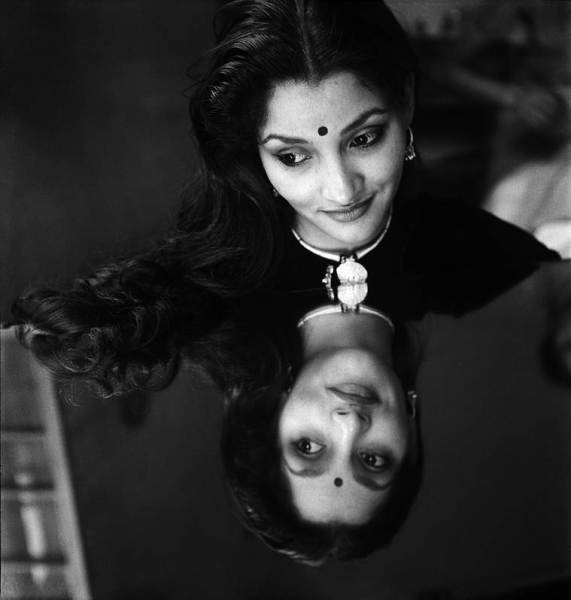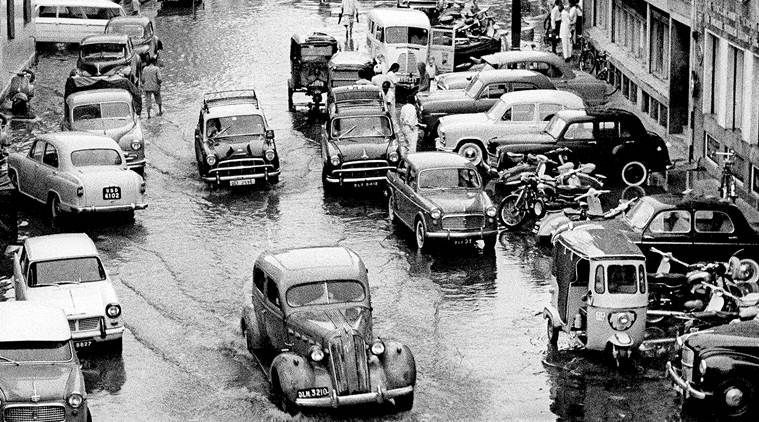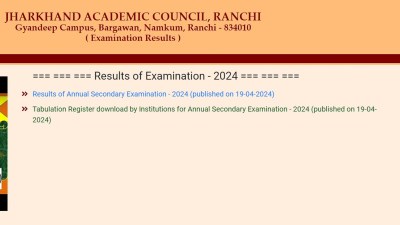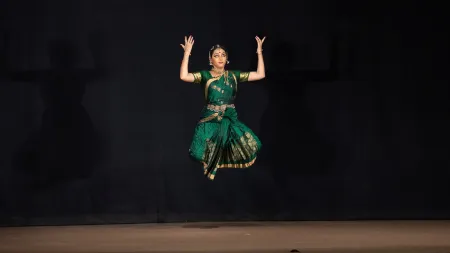- India
- International
Ghosts of a City: Exhibition reveals a nostalgic side of Delhi
The exhibition offers a rather unusual look at the Capital, beginning from the 1950s and follows it through the next five decades, with the works of Habib Rahman and renowned photographers Raghu Rai and Madan Mahatta.
 Habib Rahman’s portrait of Indrani
Habib Rahman’s portrait of Indrani
A stunning black-and-white photograph of the late classical dancer Indrani Rahman, who was the first Miss India, 1952, to represent the country at the Miss Universe pageant. Her reflection shot by her famous architect-husband Habib Rahman, after they shifted to the Capital, offers a ringside view of Delhi of the ’50s. Famous for sporting a bindi and a gajra in the swimsuit round of the international competition, not many are aware that she won the Miss Calcutta competition as part of a fundraiser. Many such stories emerge from the exhibition “Delhi That Was” at Ojas Art Gallery, Delhi, which offers a rather unusual look at the Capital, beginning from the 1950s and follows it through the next five decades, with the works of Rahman and renowned photographers Raghu Rai and Madan Mahatta.
Indrani’s son Ram Rahman, who manages the Habib Rahman Archives, mentions how actor Raj Kapoor wanted to cast his mother in his film but she thought of Bollywood as being ‘vulgar and cheap’.
 Raghu Rai’s photo of people in front of Jama Masjid
Raghu Rai’s photo of people in front of Jama Masjid
In the exhibition are photos of Kashmir-born Madan Mahatta, who passed away in 2014. He had photographed the Gandhi family — Indira, Sanjay, Rajiv and Sonia — sitting in the front row of a Pierre Cardin fashion show in 1967. The frame is a far cry from the fashion shows of today that mostly have non-entities and token presence of the Indian film industry. Mahatta’s 1978 photograph of the Delhi Zoo entrance, designed by Habib, has turbaned youngsters and women wearing shirts, pants, and salwar suits.
Mahatta also captured a flooded serpentine lane in Delhi’s popular Connaught Place (CP), full of Chevrolets, Fiats, Padminis and Ambassadors, that have wandered into oblivion in present day. It shows an almost empty Inner Circle with barely three cars parked around the shops. In a 1961 frame, there’s Queen Elizabeth with Dr Rajendra Prasad, the first President of India. She is seen waving to the crowd that has assembled on the roads, terraces and roof of CP. A young boy in a red sweater seems to be running along the corner to catch a glimpse of the royal convoy. Mahatta also turned his lens to an elephant procession at Rajpath in 1955 and photographed MF Husain painting a colourful cinema hoarding in 1974. The canvas brims with elephants, tigers and rhinoceros.

 Mahatta’s Connaught Place during the rains, 1970;
Mahatta’s Connaught Place during the rains, 1970;
New Delhi-based veteran photographer Raghu Rai is known for the way he captures the emotions of the city and its people. Be it the bare minimum clothing and drums inside a drummer’s house in a Delhi village in 1968, or a cluster of men who have assembled in front of Jama Masjid 50 years ago, which has now been overpowered by a concrete jungle and markets. A man thrashes wheat in front of Humayun’s tomb in the company of bullocks in Rai’s photograph from 1967, while labourers put all their energy into pulling ropes and installing a mammoth Lord Mahavir statue at Ahinsa Sthal in 1990.
Calling it a nostalgic exhibition, the curator of the show Anubhav Nath says, “The hope is to make people experience and view a Delhi that was, which is so romanticised and get a glimpse of how things were. In these photos, one sees what a commendable job the Archaeological Survey of India (ASI) has done to maintain these monuments.”
Institutions designed by Rahman become his focus of attention and were photographed right when they were built, be it Rabindra Bhavan and its interiors, the Curzon Road Hostels, IP Bhavan or Patel Bhavan. For instance, Rabindra Bhavan — which was initially designed to be seen from the gol chakkar — shines in a 1961 photograph and sits without the current temporary structures, boundary wall or planting. Ram says, “All that we get to see is the wall of trees now and we can no longer see the building from the road.” There’s also a photo of its interiors. The top glassed portion is full of light, in place of the artificial ones that are there today. Ram says, “All proportions that were carefully designed were messed up. The light coloured cement flooring was ripped apart and replaced with cheap wooden flooring. The sky lights have been blocked for no reason and it spoilt the whole sense of light. Natural light used to fall on the central staircase but now it is a dark and gloomy place.”
The exhibition is at 1AQ, Mehrauli, Delhi, till November 12; 11 am to 7 pm
Apr 19: Latest News
- 01
- 02
- 03
- 04
- 05


































